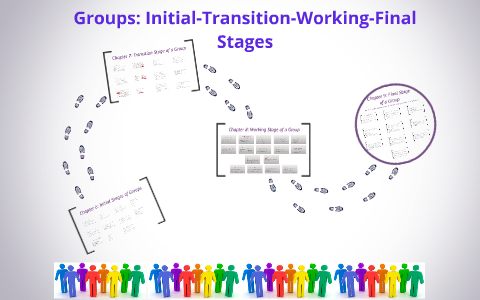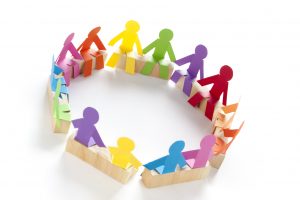4 Group Therapy Stages
 …… ……….
…… ………. 
There are 4 main stages of group therapy.
Once the group is formed there is generally a pre-group meeting. Each group member is screened to make sure they will be an asset to the group rather than a setback.
The four stages of a group, once established are:
Each stage has a purpose and there are different expectations that must be addressed as the group progresses through each stage. The therapist and group members have roles that they fall into that also change as the group transforms.
| Term | Definition | Key Element | Role of the Leader/Therapist | Example |
| 1. Initial Stage:
Orientation & Exploration |
The purpose of the initial stage of a group is to establish expectations of what the group is going to be like. These expectations include trust, roles, and goals.
The group members must be participatory and involved. |
Learn expectations, get to know each other. | The leader establishes structure and models trust. The members develop trust by how the leader handles the group’s fears and hesitations.
The leader:
|
Demonstration of Initial Stage of Group Therapy |
| 2. Transition Stage:
Dealing with Resistance |
This stage comes after the initial stage and it is when most of the group members feel anxious about sharing their feelings with strangers.
|
Wonder about being accepted, being safe, struggle with conforming vs. risk-taking behavior. | The leader: Provides a safe environment with clear boundaries. Is a model for members, by dealing directly and tactfully with any challenges, either personal or professional. Teaches members the value of recognizing and dealing with conflict situations. Assists members in recognizing their own patterns of defensiveness. Encourages the members to express how they feel when reacting to what is happening in the sessions. |
Demonstration of Transition Stage of Group Therapy |
| 3. Working Stage:
Cohesion and Productivity |
Once the transitional stage has settled, group members will start to feel comfortable enough to really get into the deeper issues that the group was designed for. This stage comes after all the kinks get worked out during the transition stage and it is when each member is able to explore their thoughts and emotions which may be triggered by someone else’s words
|
Trust is built, group becomes more cohesive, responsibility is shared, effective communication. | The leader’s structure and intervention is lower than at the initial and transitional stages.
The leader: |
Demonstration of Working Stage of Group Therapy |
| 4. Final Stage: Consolidation and Termination | Lastly, the final stage is when the group understands that they are no longer going to be together. This stage allows the group members to reflect on their experience and decide how they will use the knowledge that they acquired in their future occurrences. This stage often comes with feelings of sadness and separation. During this stage, feedback is very important.
|
Task is completed, participants evaluate their experience and deal with feelings. | The leader provides a structure that enables members to clarify their experiences in the group and to assist members in generalizing their learning from the group to everyday life. The leader assists members with feelings they may have about termination, and provides members with an opportunity to express and deal with any unfinished business within the group. | Demonstration of Ending Stage of Group Therapy |